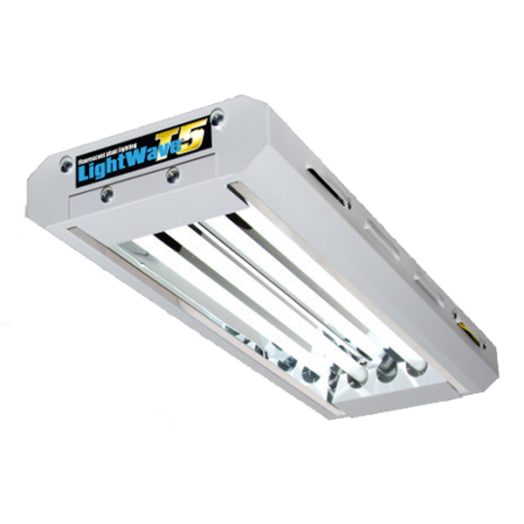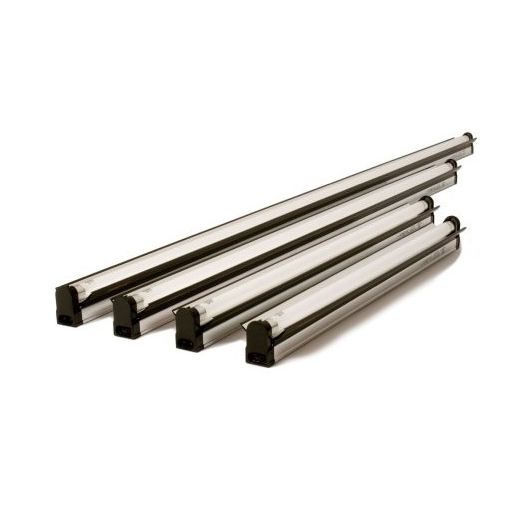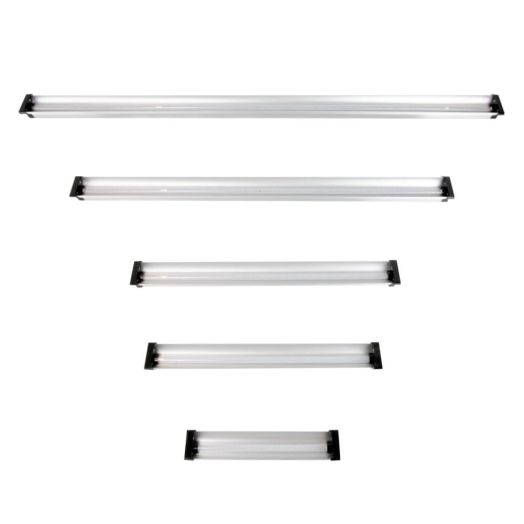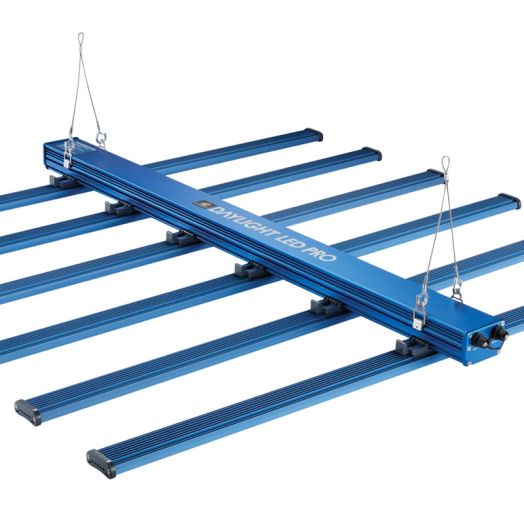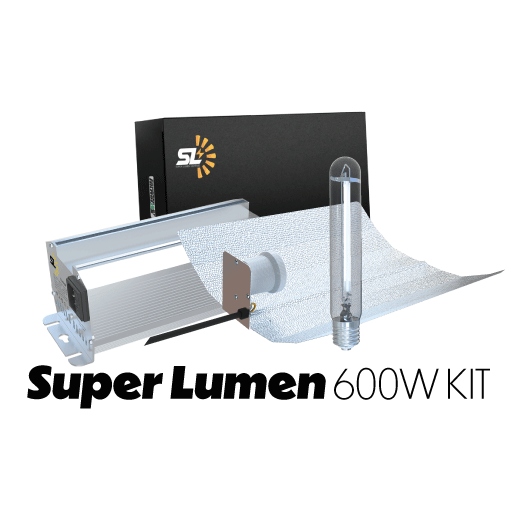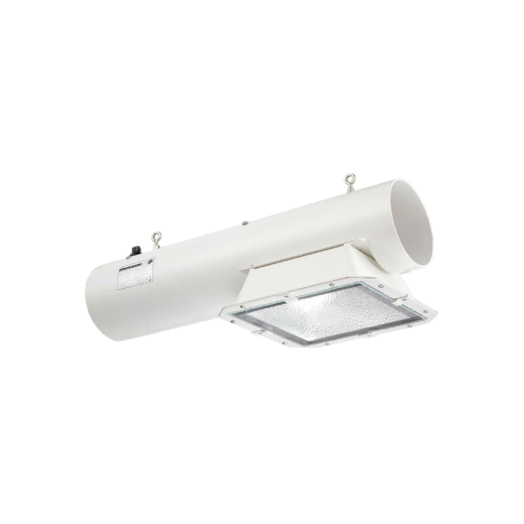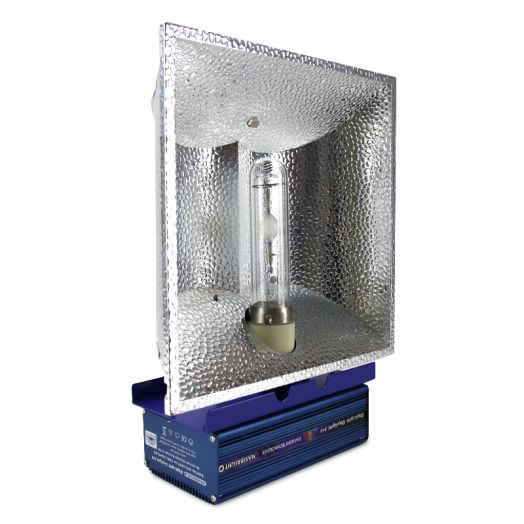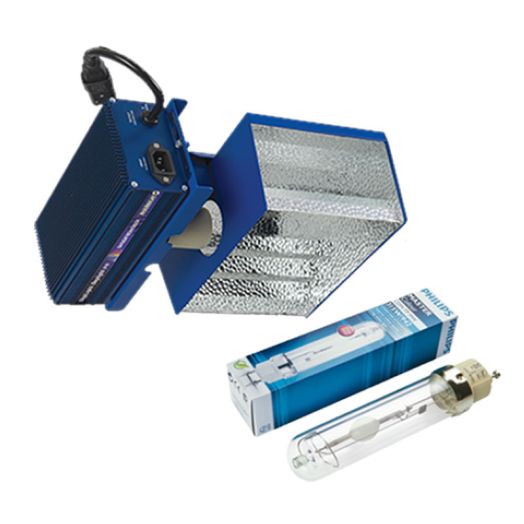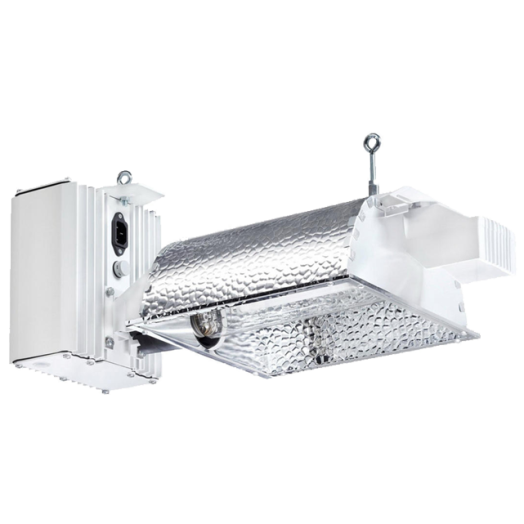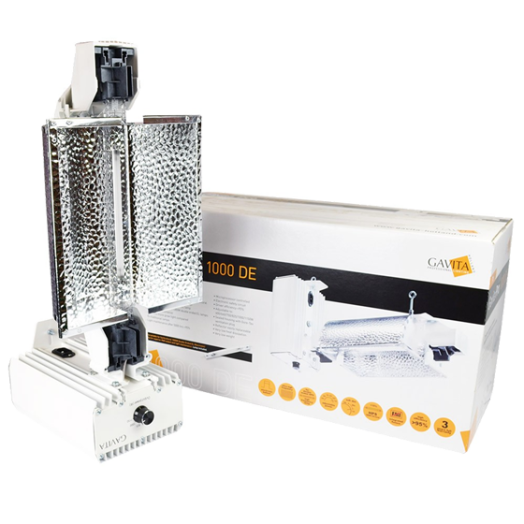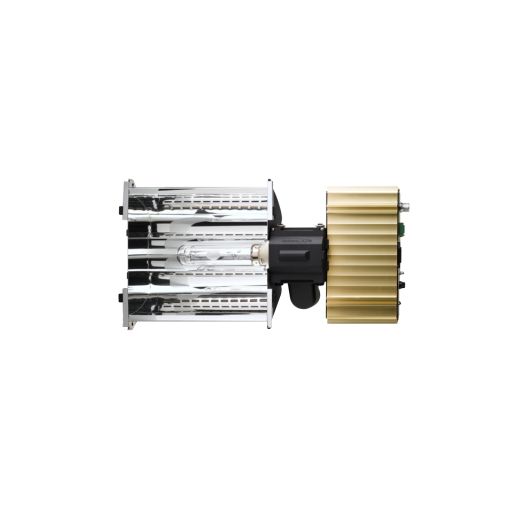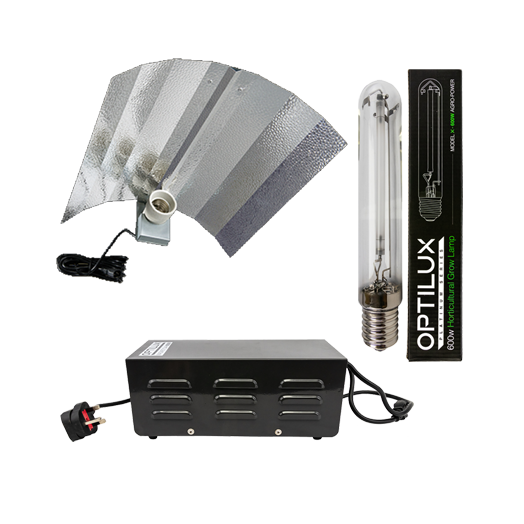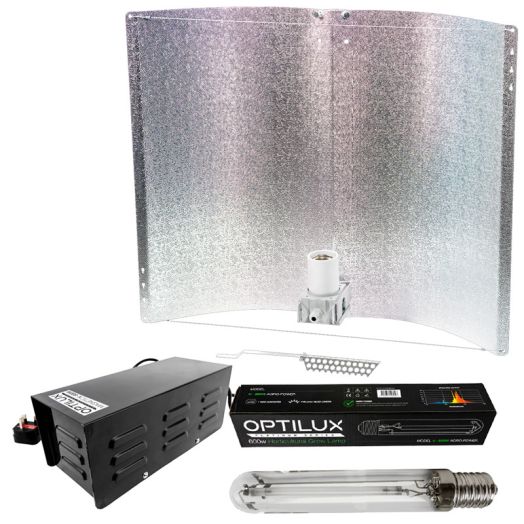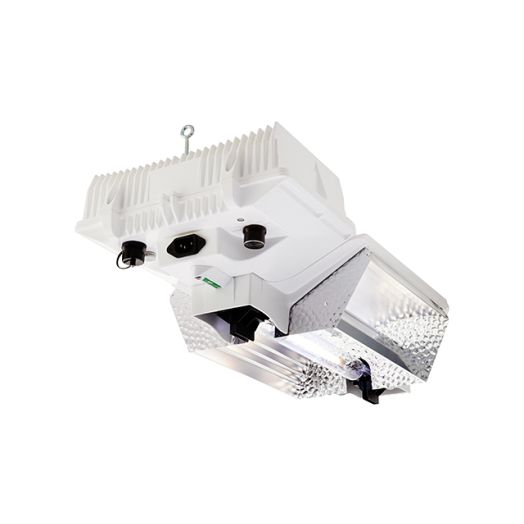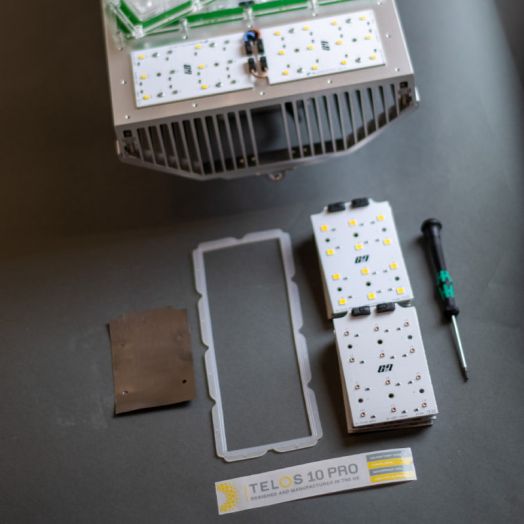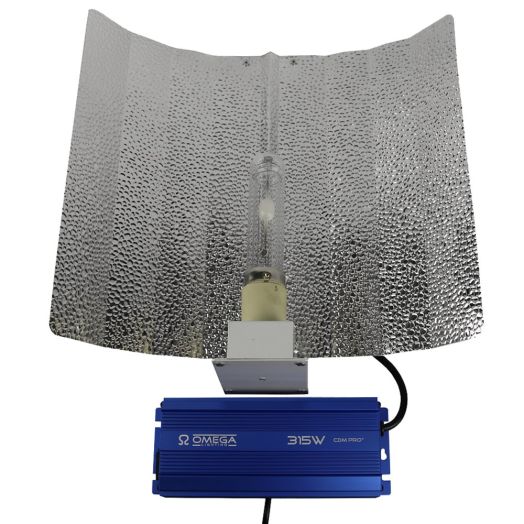Complete Grow Light Systems

-
-
-
-
Maxibright Daylight LED Grow Light 660W PRO - NEW 2.8 umol/J
Special Price £674.00 Regular Price £849.95Quickview -
-
-
-
-
-
-
-
-
-
-
Complete Hydroponic Lighting Kits
Our complete indoor hydroponic lighting kits provide everything you need to get your light source up and running, in a compatible, single package. For High Intensity Lighting (HID) the kits consist of:
- A Ballast: Converts & regulates the amount of power supplied to the grow bulb.
- A Reflector: Ensures all the light produced from the grow bulb is focused down onto the canopy of the plants. Without a reflector more than half the light is lost bouncing around the top of the tent.
- A grow bulb: An electrical light that emits photosynthetically active electromagnetic radiation (PAR) that’s used for photosynthesis. Grow bulbs have different spectral outputs that have been optimized for the various stages of plant growth.
High intensity Discharge (HID)
Metal Halide (MH)
Metal Halide lighting produces light suitable for vegetative growth. MH lights output a balanced spectrum similar to household ‘cool white’ incandescent bulbs, but MH bulbs are much more efficient at producing lumens per watt, allowing the light waves to penetrate deep into the canopy. MH bulbs carry colour from across the visible spectrum including blues, greens and reds. This output is perfect for vegetative growth as it promotes denser plants with shorter internodal spacing which leads to more fruit per branch. MH lights also reduce the plant's stretch response so your plants shouldn’t get as leggy and stretched when you put them into flower.
High Pressure Sodium (HPS)
HPS bulbs produce a spectrum of light similar to ‘warm white’ household bulbs, with less blue and green than MH but a higher output in the oranges, yellows and reds. HPS lamps tend to produce a larger lumen output per watt than MH and are suited for use during plant’s flowering cycle.
Dual Spectrum HID
Dual spectrum bulbs are based on the anatomy of HPS bulbs but have been tailored by reducing the overall output to produce more lumens in the blue side of the spectrum. This trade off is particularly interesting for indoor horticulturalists as dual spectrum lamps maintain a high output inherited from HPS bulbs whilst producing a more balanced spectrum in a similar manner to MH. Due to the balanced nature of dual spectrum lamps, they can be used throughout a growth cycle which reduces work for gardeners, since they don’t have to swap out bulbs along with the light schedule.
Ceramic Metal Halide (CMH/CDM)
CDM grow lights produce a more rounded spectral output due to the refined mix of ceramic, halides and metallic salts. This wide spectrum is extremely close to the output from the sun
Economical lighting
LED
LED lighting is a different kettle of fish to HID lighting. LED’s use drivers that are mounted internally to convert and supply power to the LED array. The drivers will often provide power to a portion of the array, so there might be 4 drivers in each unit running ¼ of the LEDs on the panel - in the likely even that one of the drivers fails, the light will still be able to output a proportion of its light.
Each individual LED can output a different colour so in combination they can be tailored to produce the perfect spectrum for particular plant species during a specified stage of growth - our Kind range of LED’s allows on-the-fly manipulation of the spectral output via a remote control to ensure the correct spectrum is produced throughout a cycle.
Another benefit to LED technology is the lower amount of heat output when compared with HID, allowing it to be used in smaller spaces where heat build up may be an issue if HID were used in the same size space.
Fluorescent
Fluorescent bulbs are similar to LED’s in that they have on-board internal circuitry to correct and stabilize the electrical output so there's no need for an external ballast - just plug and play. Fluorescent lights are normally a lower power output than HID lighting so are perfect for propagation and vegetative phases but do not offer as much penetration into the canopy as HID so are not optimal for use during flower. We do offer red fluorescent bulbs that output a spectrum tailored for flower. Fluorescent bulbs have a low heat output so can be used in smaller spaces or during hot summer months where heat may be an issue.
While Fluorescent bulbs do not require an external ballast, you will still need a reflector to maximise the use of the light you produce.
Which Grow Light Should I Use?
If one type of grow light was much more popular than other lights then that one would clearly be better but all of our grow lights are good sellers and have their own pro’s and cons; it just depends on your gardening style and requirements as to what's best suited for you. If you're new to hydroponics, a good place to start would be our budget magnetic light kit with HPS bulb for £50, you could buy an additional MH bulb for vegetative growth which would drastically improve your results.
We also sell a Digital Light Kit for just £85, that is supplied with a dual spectrum bulb and is more efficient than magnetic ballasts, so the initial outlay can be recuperated in electrical costs over time. Digital ballasts also allow you to select the output of the bulb without swapping it out so you can reduce the output when your plants are small and increase the output once they’ve filled out your space.
High-end setups often make use of premiums brands that typically use higher quality components that produce even more light output per watt than budget brands. Gavita and dimlux’s All-in-One systems have an increased output that has a corresponding effect on yield. Dimlux and Gavita’s only downside is the cost, as they are much more expensive than other lighting options but will massively increase your yields.
230v standard frequency grow lights vs 400v high frequency grow lights
In the UK, households and businesses are supplied with electric by the national grid at 230v. Magnetic ballasts and cheaper digital ballasts stabilize this frequency, delivering the same 230v to the bulb. Recent innovations in grow lamp technology have allowed the development of 400v ballast and bulbs that are a higher frequency and therefore produce more light per second compared to 230v units. 400v units can therefore increase your yield but are more expensive to initially purchase. 230v and 400v bulbs and ballast are not interchangeable, so be careful when replacing equipment to match the type of equipment you have.
If you've still got any questions regarding the best choice of complete lighting system for your space, email us or call our specialist team on 0800 085 7995

